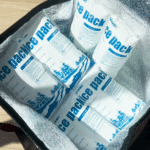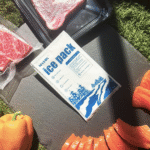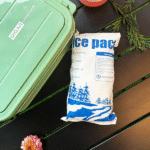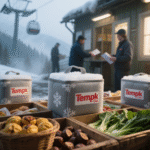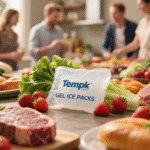What’s the Maximum Dry Ice per Package Allowed?
Le maximum dry ice per package allowed depends on mode and operator rules. In air cargo, it’s up to 200 kg par forfait; in passenger baggage, c'est 2.5 kg per person; USPS air caps a mailpiece at 5 kg. You still need vented packaging, UN1845 marking, and the right AWB text to pass acceptance. This article consolidates the latest 2025 compliance guidelines and practical cold chain advice.
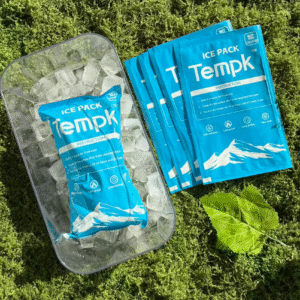
-
Legal limits by mode avec maximum dry ice per package allowed for common scenarios
-
Conditionnement, étiquetage, et ventilation so handlers clear your shipment fast
-
A quick calculator approach to size dry ice without overpacking
-
Variations des porteurs and how to avoid rejections on specific lanes
-
2025 tendances that influence safety, coût, et durabilité
What is the maximum dry ice per package allowed in 2025?
Réponse courte: Jusqu'à 200 kg par colis pour le fret aérien, 2.5 kg in passenger baggage, et ≤ 5 lb for USPS air. Ground has no single national cap; follow packaging, ventilation, and carrier weight/SOP limits. Always confirm operator variations before you ship. The same package can be legal on cargo but restricted on a passenger route.
Pourquoi ça compte: A single wrong number on your label or AWB can hold freight at tender. Treat 200 kg as a global ceiling, not a guarantee. Your packaging must vent CO₂ and display UN1845, the proper shipping name, et kg net de glace sèche sur la boîte.
How do operator variations change the maximum dry ice per package allowed?
Compagnies aériennes, express carriers, and postal services can set tighter limits. Common examples include lower per-package caps on some fleets, per-hold totals, and service-level restrictions. Plan your pack-out for the maximum dry ice per package allowed on that exact service and lane, not just the IATA headline rule.
| Mode / Service | Limite (typique) | Key rule you must meet | Ce que cela signifie pour vous |
|---|---|---|---|
| Air cargo (UN1845) | 200 kg / emballer | Ventilation + UN1845 + Kg net + Texte AWB | Use validated shippers; imprimer exact net kg |
| Bagages de passagers | 2.5 kg / passager | Airline approval + ventilation + marquage | Fine for short trips; not for bulk payloads |
| USPS air mailpiece | ≤ 5 kg | Domestic air only + ventilation + étiquette | Need more? Use surface/ground or cargo |
| Domestic ground (NOUS.) | No national kg cap | Conditionnement + carrier SOP | Follow carrier weight limits (Par exemple, ≤ 150 lb/package) |
Conseils pratiques et gains rapides
-
Print net kg, not “approx.” Align box, docs, and e-AWB values.
-
Ne jamais sceller hermétique. Venting is mandatory.
-
Déborder: Marks must remain visible; never “hide” UN1845 and net kg.
Par exemple: A biotech shipper cut spoilage by 40% after adding CO₂/temperature loggers and right-sizing per-package limits, then aligning labels and AWB entries with operator checklists.
How to calculate the maximum dry ice per package allowed for your lane?
Idée de base: Match duration × sublimation rate × safety buffer. Use validated data for your container.
Formule rapide:
Glace sèche (kg) = (Transit hours ÷ 24) × daily sublimation rate × buffer (1.1–1.2)
-
Typical rates (24 h): Excellent foam shipper 4–6 lb; good plastic 6–8 lb; lined carton 8–10 lb.
-
Exemple: 48 h in a foam shipper at ~5–6 lb/day → 10–12 lb, plus 10–20 % tampon.
-
Reality check: Hot lanes, customs holds, and re-sorting increase consumption.
| Planification des commentaires | Gamme typique | What to enter | Pourquoi ça compte pour toi |
|---|---|---|---|
| Transit duration | +24–120 h | Add 1-day buffer | Delays are common |
| Daily loss (mousse) | 4–6 lb/24 h | Use worst-case | Prevent under-packing |
| Ambient risk | Bénin / Chaud | +10–20% in heat | Lane-specific safety |
| Net dry ice (kg) | Calculated | Put exact kg on box | Passer l'acceptation pour la première fois |
Conseils exploitables
-
Court-courrier: Compact foam shipper with 2–6 kg often holds 24–36 h when pre-chilled.
-
Long-courrier: Combine dry ice with PCMS for smoother temperature control.
-
High value: Add CO₂ and temperature sensors; set alerts for trend breaks.
Labeling and packaging for the maximum dry ice per package allowed
Faites ça à chaque fois: UN1845, «Glace sèche» ou «dioxyde de carbone, Solide,” net weight (kg) on the outer box, Classe 9 étiquette, vented design, et correct Ligne AWB. Pas de phoques hermétiques. This is the fastest way to clear carrier acceptance with the maximum dry ice per package allowed.
Liste de contrôle d'acceptation:
-
Ventilé, robust outer + insulated inner.
-
UN1845 + nom propre + Kg net printed on box side.
-
Classe 9 étiquette visible; marks not covered by tape or overpack skins.
-
AWB shows UN1845, Nombre de packages, et net kg per package.
-
Training up to date; use e-DGD where required.
Carrier differences: when the maximum dry ice per package allowed changes
-
Courier air: Many services cap packages below 200 kg, often 2.5–20 kg.
-
USPS: ≤ 5 lb by air; more must go ground.
-
UPS/FedEx/DHL: Follow IATA rules but check service-level SOPs.
-
Sol: Follow packaging and operator weight limits; no single national cap.
Pro move: Build a one-page SOP per lane listing the maximum dry ice per package allowed, AWB line format, et liste de contrôle d'acceptation.
2025 updates shaping the maximum dry ice per package allowed
Quoi de neuf: Digital acceptance and documentation are now standard. Attendre e-DGD, lane-specific operator caps, and tighter trop déborder marking checks. Smart vent plugs and CO₂-aware packaging reduce pressure risk while cutting waste. Growing pharma and biologics demand favors validated foam/VIP kits and hybrid dry-ice + PCM designs.
Dernier en un coup d'œil
-
e-DGD & checklists reduce paperwork errors.
-
Operator variations: 200 kg is the ceiling; check per-fleet limits.
-
Durabilité: CO₂ recovery and lighter shippers lower cost.
Perspicacité du marché: Teams that validate pack-outs with data loggers often cut dry ice use by 10–20% while staying compliant.
FAQ: common compliance questions about the maximum dry ice per package allowed
Q1: What is the maximum dry ice per package allowed for air cargo?
Jusqu'à 200 kg par forfait, with venting, UN1845 marking, et corriger le texte AWB. Operators may set lower limits.
Q2: How much can I carry in passenger baggage?
2.5 kg (5.5 kg) par passager / colis, Approbation des compagnies aériennes requises, and the container must vent.
Q3: What does USPS allow by air?
≤ 5 kg per mailpiece for domestic air; heavier amounts must go surface/ground or cargo.
Q4: Ai-je besoin d'une déclaration de l'expéditeur?
Not when dry ice cools non-dangerous goods; do include the UN1845 line on the AWB. If cooling dangerous goods, a declaration applies.
Q5: What happens if I exceed an operator’s cap?
Expect rejections, delays, or penalties. Always weigh and declare net kg correctly.
Résumé & recommandations
Souviens-toi: Le maximum dry ice per package allowed est 200 kg in air cargo, 2.5 kg in baggage, et 5 kg for USPS air. Utiliser un emballage ventilé, imprimer UN1845 et Kg net, and align AWB text to the booked service. Validate pack-outs with data to avoid over- or under-packing. Build lane-specific SOPs to ensure every shipment clears first time.
Étapes suivantes:
-
Confirm the carrier/service cap.
-
Use the calculator to size ice.
-
Print exact Kg net on box and AWB.
-
Pilot with data loggers.
-
Review your training quarterly.
Internal links you can add
-
Dry Ice Labeling Guide (UN1845 & Classe 9) → /knowledge/dry-ice-labeling-un1845
-
How to Build a 48-Hour Frozen Pack-Out → /knowledge/48h-frozen-packout
-
Validated Foam Shipper Sizing Calculator → /tools/shipper-sizing-calculator
-
Hybrid Cooling: Glace sèche + PCM → /knowledge/dry-ice-plus-pcm
-
AWB Examples for Dry Ice → /resources/dry-ice-awb-examples
Engagement boosters
-
Decision widget: “How much dry ice can I legally use?» (mode / carrier inputs)
-
Self-check quiz: “Can this package fly?» (5 yes/no checks)
-
Downloadable checklist: “Dry ice acceptance walk-through (2025).»
À propos du tempk
We help you ship frozen and refrigerated products safely and compliantly. Our validated foam/VIP shippers, dry-ice packs, and monitoring options keep lanes stable for 24–120 hours while meeting labeling and venting rules. We combine packaging science with hands-on lane design to shorten acceptance times and cut waste.
Appel à l'action: Want a 10-minute pack-out review? Talk to a cold-chain specialist.
















